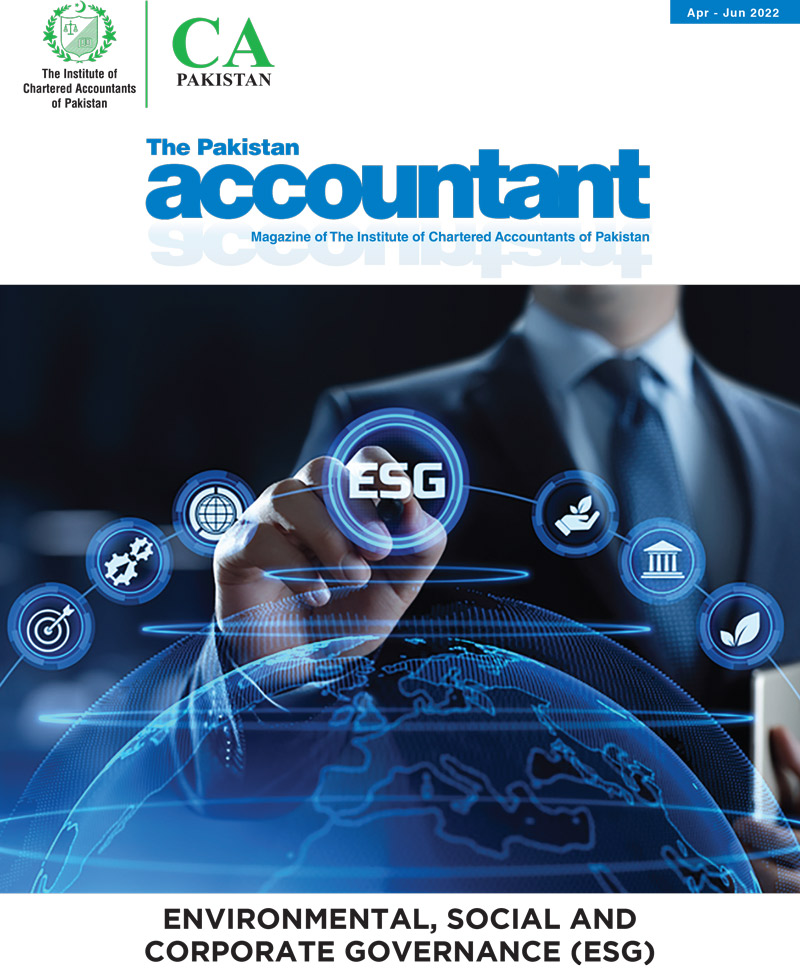ESG Overview
ESG stands for Environment, Social and Corporate Governance Management. It is an emerging area in corporate strategy and risk governance to ensure sustainability of an entity with an extra focus from investment community in general, and the global regulators for financial institutions. However, the implications are equally critical for industries.
For example, for a financial institution, the purpose is to ensure that business activities – associated with a transaction, product or service, client supplier or other third party – are conducted with due regard for the impact of environmental and certain social considerations on credit, market, reputational, regulatory, and legal risk to entity.
ESG is an emerging area in corporate strategy and risk governance to ensure sustainability of an entity with an extra focus from investment community in general, and the global regulators for financial institutions.
| Environmental (Conservation of the natural world) | Social (Consideration of people & relationships) | Governance (Standards for running a company) |
|---|---|---|
| Climate change & carbon emissions | Customer satisfaction | Board composition |
| Air and water pollution | Data protection and privacy | Audit committee structure |
| Biodiversity | Gender and diversity | Bribery and corruption |
| Deforestation | Employee engagement | Executive compensation |
| Energy efficiency | Community relations | Lobbying |
| Waste management | Human rights | Political contributions |
| Water scarcity | Labor standards | Whistleblower schemes |
Environmental and social (E&S) issues are inherent in almost all business and operations. These may include, but are not limited to: site contamination, waste management, land and resource use, biodiversity, water quality and availability, climate change, environmental regulation, human rights and consultation, community and labour relations, diversity and inclusion, gender equity and equality.
Every organization should develop an enterprise-wide framework to address ESG Risk – supported by related policies – to identify and assess sectors, clients, and business activities exposed to E&S Risk, and establish supporting requirements and escalation protocols to manage and mitigate them.
Key Factors
As per a recent CFA Institute analysis on ESG investing, there is no one exhaustive list of ESG examples. ESG factors are often interlinked, and it can be challenging to classify an ESG issue as only an environmental, social, or governance issue, as the table below shows. These ESG factors can often be measured (e.g., what the employee turnover for a company is), but it can be difficult to assign them a monetary value (e.g., cost of employee turnover for a company).
| Economic risks | Financial risks |
|---|---|
| Supply chain disruptions | Credit risk |
| Raw material price volatility | Market risk |
| Productivity changes | Liquidity risk |
| Changing demand and costs | Operational risk |
| Stranded assets | |
| Relocation of activities | |
| Legal liabilities | |
| Lowe asset value |
ESG Risk Mapping
The ESG-related risks can be mapped to the traditional financial risks as follows:
| Financial Risk Category | Impact |
|---|---|
| 1. Credit Risk | The financial position of clients with significant potential environmental exposures or community relations problems could be adversely affected in several ways: a) Additional costs as a result of: i. Additional capital expenditures (e.g., equipment upgrade), taxes (e.g., carbon taxes), and costs (e.g., permits and licenses) to improve compliance with environmental laws and regulations. ii. Regulatory fines iii. Clean up cost b) Delays in regulatory approvals for new projects and productivity loss c) Business continuity |
| 2. Reputational Risk | Entity’s image in the community or public confidence may be adversely impacted because of its relationship with a client viewed to be socially and/or environmentally irresponsible. This could result in the loss of business, brand value, and reputation. |
| 3. Legal Risk | Superiority environment claims in bankruptcy or receivership by the government, in some jurisdictions (e.g., Canada), over other claims, rights or charges. |
| Climate risk drivers (Physical & Transition factors: likelihood or size of the impact - location, frequency, and severity) | Transmission channel (Micro - & Macroeconomic: to connect climate risk drivers with traditional financial risk category) | Financial impact (Traditional Risk Categories) |
|---|---|---|
| Physical climate risk drivers Increasing severity and frequency of climate-related events: | Microeconomic transmission channels for credit risk: Households - Corporates - Sovereigns | Increase in credit risk Credit risk increases if climate risk drivers reduce borrowers’ ability to repay and service debt |
| Short-term: ‘Acute physical hazards’ are caused by extreme weather events (e.g., wildfires, heat waves, floods, storms) | Macroeconomic transmission channels for credit risk: - Government debt - GDP - Labor changes - Socioeconomic changes | (income effect) or banks’ ability to fully recover the value of a facility in the event of default (wealth effect). |
| The key short-term driver of Physical risk for Obligors is mainly due to its location (e.g.,buildings in floodplain) - Long-term: ‘Chronic physical hazards’ due to long-term shifts in climate patterns (e.g., prolonged droughts, landslides, sea level rises, precipitation variability) | Microeconomic transmission channel for market risk: - Stock prices - Currencies - Commodity prices Currently, not enough research is available to assess the market risk impact through Macroeconomic transmission channel. | Currently, the financial services industry is mainly focused on banks’ credit risk and to a lesser extent on market risk. |
| The key long-term driver of Physical risk for Obligors is due to their exposure to weather patterns (e.g., agriculture, forestry). | Increase in market risk Market risk increases due to reduction in financial asset values, including the potential to trigger large, sudden and negative price adjustments where climate risk is not yet incorporated into prices. Climate risk could also lead to a breakdown in correlations between assets or a change in market liquidity for particular assets, undermining risk management assumptions. | |
| Transition climate risk drivers Steps taken to reduce carbon dioxide emissions (i.e., transition to a low-carbon economy) may result in strandedassets due to: Government policy changes (e.g., net zero policies, higher reporting / compliance costs) - Technological developments (e.g., costs of transition to new technology such as renewable energy and electric cars, write-off / write-down | Increase in liquidity risk Higher liquidity risk as Banks’ access to stable sources of funding reduces due to changing market conditions. Climate risk drivers may cause banks’ counterparties to draw down deposits and credit lines. |
Recent Focus
The initial focus of E&S issues faced by financial institutions were local in nature (e.g., liability for site contamination), it has gained additional focus recently on a broader regional and global scale (e.g., human rights, climate change), posing increased risk to a financial institution’s reputation. Such issues may directly impact or be impacted by entity’s business and operations, which may give rise to related risks such as credit risk, regulatory and legal risk, and reputational risk, ultimately adversely impacting revenue and expenses.
E&S issues can also affect an entity indirectly through client relationships, which may affect a client’s reputation, cash flow, ability to operate or ability to grow its business. Consequently, this can give rise to credit, operational, or legal risk for an entity.
Climate Risk as per Basel
The ‘climate & environment’ related financial risks, which is a subset of ESG Risks, may need some extra attention. Basel has recently issued some guidance for banks to follow in this regard.
The ‘climate & environment’ related financial risks may arise from climate change or from efforts to mitigate climate change, their related impacts, and their economic and financial consequences.
The climate-related and environmental risk is driven by Physical and Transition factors (including the likelihood or size of the impact) which affect a banks’ financial risks (e.g., credit, market, operational, liquidity, reputational risks) via micro- and macroeconomic transmission channels.
The increasing severity and frequency of Physical climate risk drivers may result in economic costs and financial losses. Simultaneously, as economies seek to reduce carbon dioxide emissions, this impact government policies, technological developments, or investor and consumer sentiment. These efforts generate Transition climate risk drivers, which may result in significant costs and losses.
| Climate risk drivers (Physical & Transition factors: likelihood or size of the impact - location, frequency, and severity) | Transmission channel (Micro - & Macroeconomic: to connect climate risk drivers with traditional financial risk category) | Financial impact (Traditional Risk Categories) |
|---|---|---|
| of existing assets) - Investor sentiment (e.g., ESG – Environment, Social & Governance – based investments) | Microeconomic transmission channel for operational risk: - Failed internal processes - Internal or external events | Potential for increased operational risk |
| Consumer sentiment, market changes, and reputation (e.g., reduced demand for high-emissions products such as air travel, abrupt shift in energy costs) | Currently, not enough research is available to assess the operational risk impact through Macro economic transmission channel. | Increasing legal and regulatory compliance risk associated with climate-sensitive investments and businesses. |
| The key drivers of transitional risk for Obligors arise mainly due to carbon- intensity of business (e.g., coal, oil & gas, utilities). Given its forward-looking nature, analysis of transition risk is mainly focused on scenario analysis. | In addition, increasing reputational risk to banks is based on changing market or consumer sentiment. |
As per a recent CFA Institute analysis on ESG investing, there is no one exhaustive list of ESG examples. ESG factors are often interlinked, and it can be challenging to classify an ESG issue as only an environmental, social, or governance issue, as the table below shows.
Climate Risk Type Interactions:
There is a strong interaction between Physical risk and Transition risk. For example, an ‘effective transition’ to a low-carbon economy results in high transition risk and low physical risks. Whereas an ‘ineffective transition’ (i.e., BAU) result in low transition risk and high physical risks.
The Physical and Transition climate risk factors can vary according to geography, by sector and by economic and financial system development.
Banks require plausible ranges of scenarios to assess the potential impacts of both physical and transition risk drivers on their exposures. As a first step, management of climate risk and any scenario analysis need sufficiently granular data that capture the climate sensitivity of their exposures and are subject to an appropriate methodology as discussed in the Basel’s Climate-related financial risks – measurement methodologies document.
E&S issues can also affect an entity indirectly through client relationships, which may affect a client’s reputation, cash flow, ability to operate or ability to grow its business. Consequently, this can give rise to credit, operational, or legal risk for an entity.
Measurement Techniques:
Quantifying climate Physical risk impact is initially hard to achieve due to considerable additional non-standard data requirements, or confidence in the ability to insure against prospective losses. Therefore, initially Banks’ focus on measurement of climate Transition risk in their portfolios, as discussed below:
- The key metric defining climate-related transition risk is “emissions”. The standard measure of emissions is “CO2 equivalent” or CO2e.
- Therefore, the Exposure to climate transition risk will be measured against steps taken to reduce “Carbon Intensity” (direct or indirect) of assets & operations.
- The two widely used methodologies for measuring emissions are the:
- GHG (Greenhouse Gas) Protocol: mainly for measuring direct emissions
- PCAF (Partnership for Carbon Accounting Financials) Standard: measures financed / indirect emissions
- Accordingly, the Bank can rank its borrowers / exposures / portfolios, by carbon footprint and implied risk, based on a climate risk scale as follows:
- Climate risk of the borrower ≈ carbon intensity of the sector
- “Sustainable” sectors e.g., renewable energy
Data Requirements:
- Availability of climate-related risk data remains an issue across the financial services industry.
- As per Basel guidelines, physical risks require “geolocational data given spatially varying characteristics of climate impacts”, and transition risk requires “counterparty-and industry-level data capturing risk resulting from a shift from a high- to a low-carbon economy”.
- As this is a relatively new and developing area in risk management, the initial focus of Banks’ climate-risk methodology will be centered on mapping near-term transition-risk drivers into counterparty and portfolio exposures, which include capturing the carbon intensity of portfolios and sectoral exposures and devising internal climate risk ratings or scores.
- Quantifying physical climate impact is initially hard to achieve due to considerable additional non-standard data requirements, or confidence in the ability to insure against prospective losses.
The climate-related and environmental risk is driven by Physical and Transition factors (including the likelihood or size of the impact) which affect a banks’ financial risks (e.g., credit, market, operational, liquidity, reputational risks) via micro-and macroeconomic transmission channels.
Conclusion:
A three-dimensional approach may be established which includes identifying unique types of granular data, and then using the data for:
- Translating climate-risk drivers – their transmission channels – into economic risk factors;
- Linking climate-adjusted economic-risk factors to related exposures; and
- Translating climate-adjusted economic-risk into financial-risk (such as credit, market, liquidity, and operational risk).














